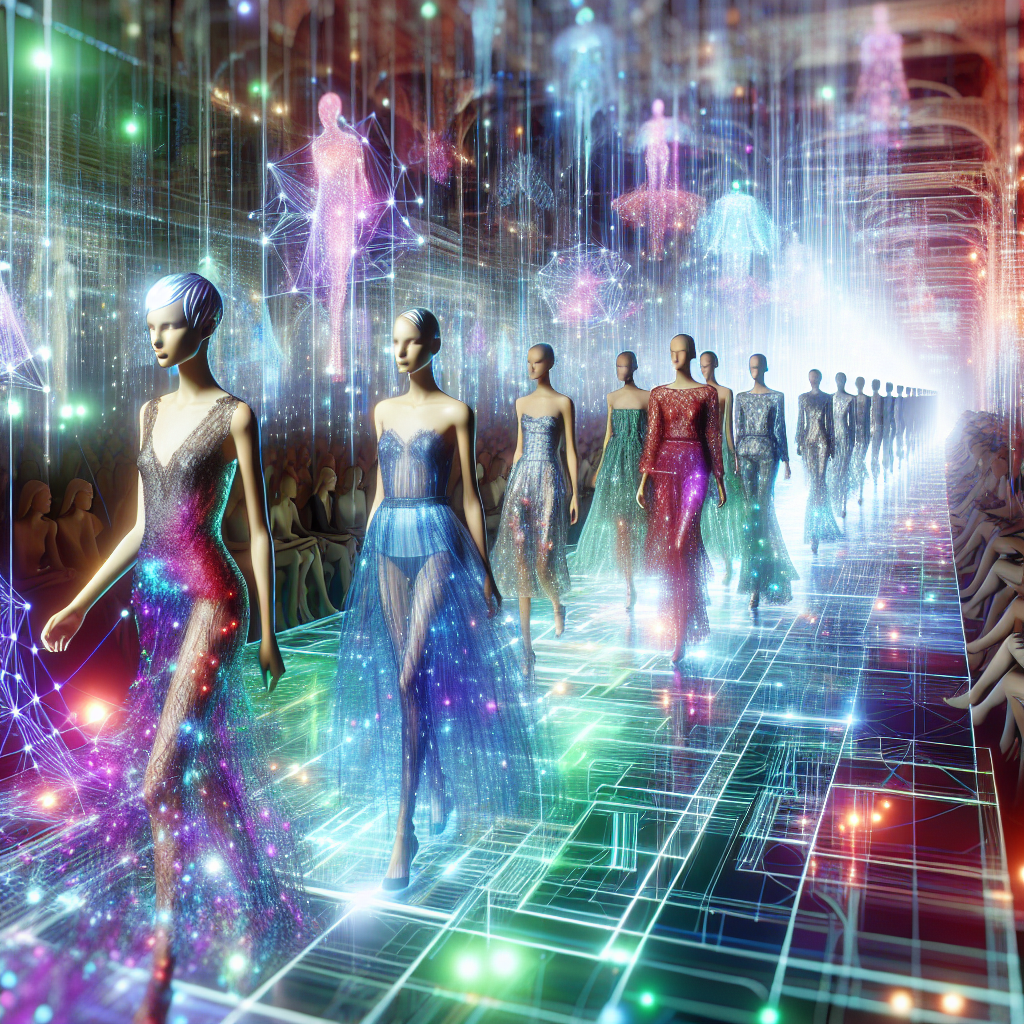In recent years, the fashion industry has seen a significant shift towards the use of technology and artificial intelligence (AI) in various aspects of the creative process. One of the most intriguing developments in this regard is the use of AI in fashion shows, where virtual runways and digital models are becoming increasingly prevalent. This trend is not only changing the way fashion shows are produced and presented but also raising questions about the future of the industry as a whole.
Virtual runways and digital models are revolutionizing the way fashion shows are conducted. Traditionally, fashion shows have been exclusive events that are limited to a select few attendees, such as industry insiders, celebrities, and VIPs. However, with the advent of virtual runways, fashion shows can now be broadcasted to a global audience in real-time, allowing fashion enthusiasts from around the world to experience the event as if they were sitting in the front row.
Furthermore, virtual runways eliminate the need for physical venues, which can be costly and logistically challenging to secure. By moving fashion shows online, designers can reach a wider audience and showcase their collections in a more accessible and inclusive manner. This shift towards virtual runways also aligns with the industry’s growing emphasis on sustainability, as it reduces the carbon footprint associated with traditional fashion shows.
Digital models, powered by AI technology, are also playing a significant role in the evolution of fashion shows. These virtual models are created using computer-generated imagery (CGI) and are indistinguishable from real-life models in terms of appearance and movement. Digital models offer designers a level of creative freedom that is not possible with human models, allowing them to experiment with unconventional shapes, sizes, and proportions.
Moreover, digital models can be customized to reflect a designer’s aesthetic vision, making them an ideal canvas for showcasing a brand’s identity and values. By using digital models in fashion shows, designers can push the boundaries of creativity and innovation, creating truly unique and immersive experiences for their audiences.
While the use of AI in fashion shows opens up exciting possibilities for the industry, it also raises several important questions about the future of fashion and the role of technology in shaping it. Below are some frequently asked questions (FAQs) about AI and the future of fashion shows:
1. How will the use of AI in fashion shows impact the role of human models?
The rise of digital models has sparked a debate about the future of human models in the fashion industry. While digital models offer designers greater flexibility and creative control, they also raise concerns about the potential displacement of human models. It is essential for the industry to strike a balance between the use of digital and human models, ensuring that both can coexist and contribute to the creative process in meaningful ways.
2. What are the ethical implications of using AI in fashion shows?
The use of AI in fashion shows raises ethical questions about the authenticity and representation of beauty standards. Digital models are often created to embody unrealistic and unattainable ideals of beauty, which can perpetuate harmful stereotypes and reinforce existing inequalities in the industry. It is crucial for designers and brands to approach the use of AI with sensitivity and responsibility, ensuring that their representations are diverse, inclusive, and respectful of all individuals.
3. How will virtual runways impact the fashion industry’s environmental footprint?
By moving fashion shows online, designers can significantly reduce the environmental impact of their events, as they no longer need to travel to physical venues or produce large quantities of printed materials. Virtual runways offer a more sustainable and eco-friendly alternative to traditional fashion shows, aligning with the industry’s growing focus on environmental sustainability.
4. What are the implications of AI on the design process in the fashion industry?
AI technology is transforming the design process in the fashion industry, enabling designers to create new and innovative collections more efficiently and effectively. By using AI-powered tools and algorithms, designers can streamline the design process, generate new ideas, and optimize their creative output. However, the use of AI also raises questions about the future of creativity and craftsmanship in fashion, as it blurs the line between human and machine-generated design.
In conclusion, the integration of AI in fashion shows is reshaping the industry in profound ways, from virtual runways to digital models. While these developments offer exciting opportunities for designers and brands to innovate and connect with audiences in new ways, they also raise important questions about the future of fashion and the role of technology in shaping it. By embracing AI responsibly and ethically, the fashion industry can harness its potential to drive positive change and create a more inclusive and sustainable future for all.

